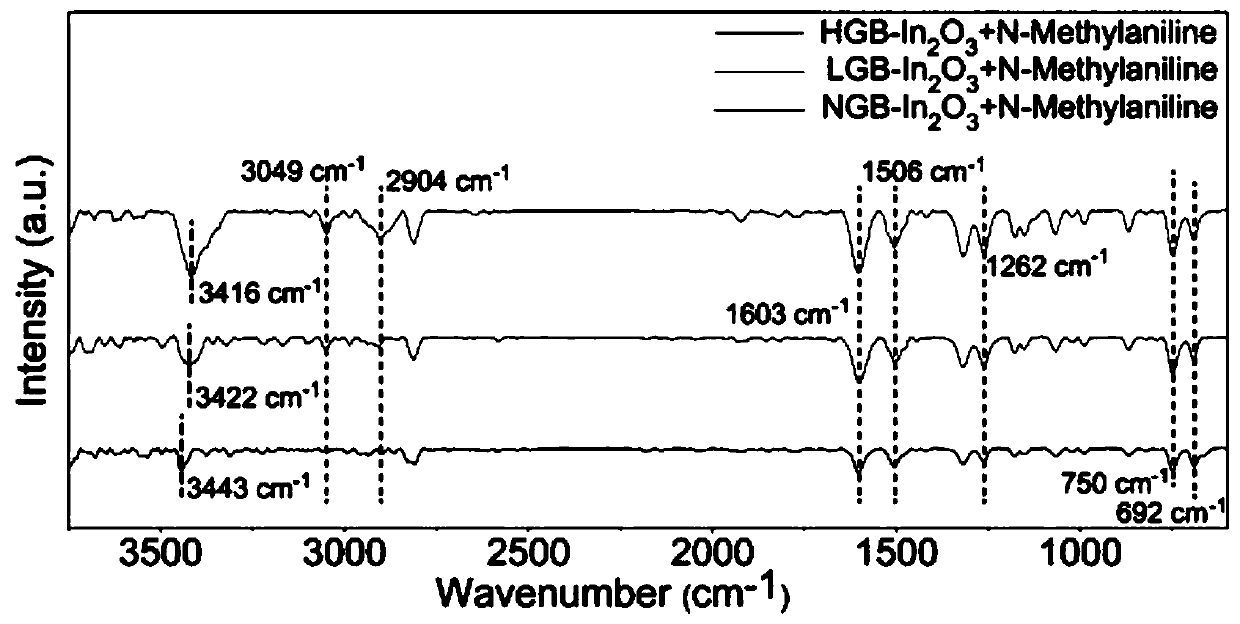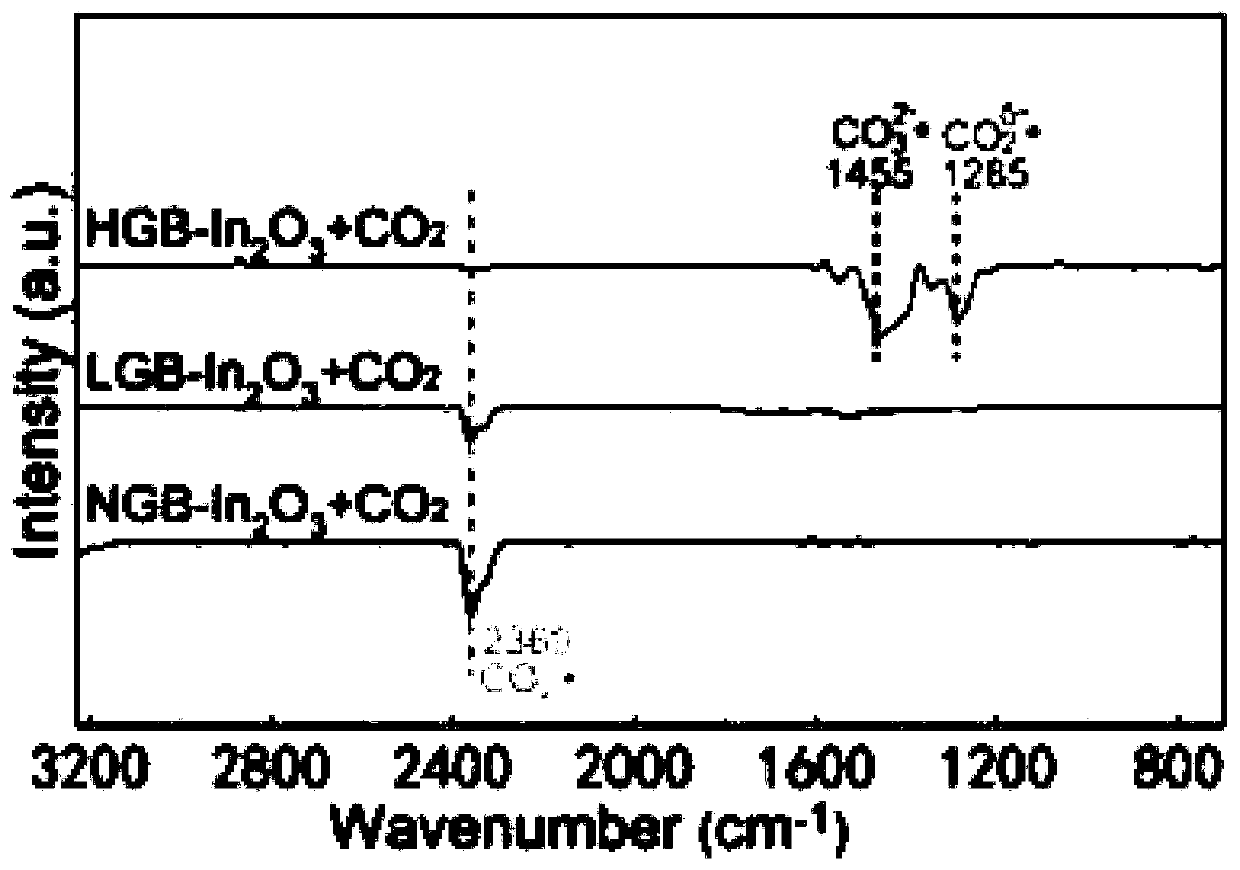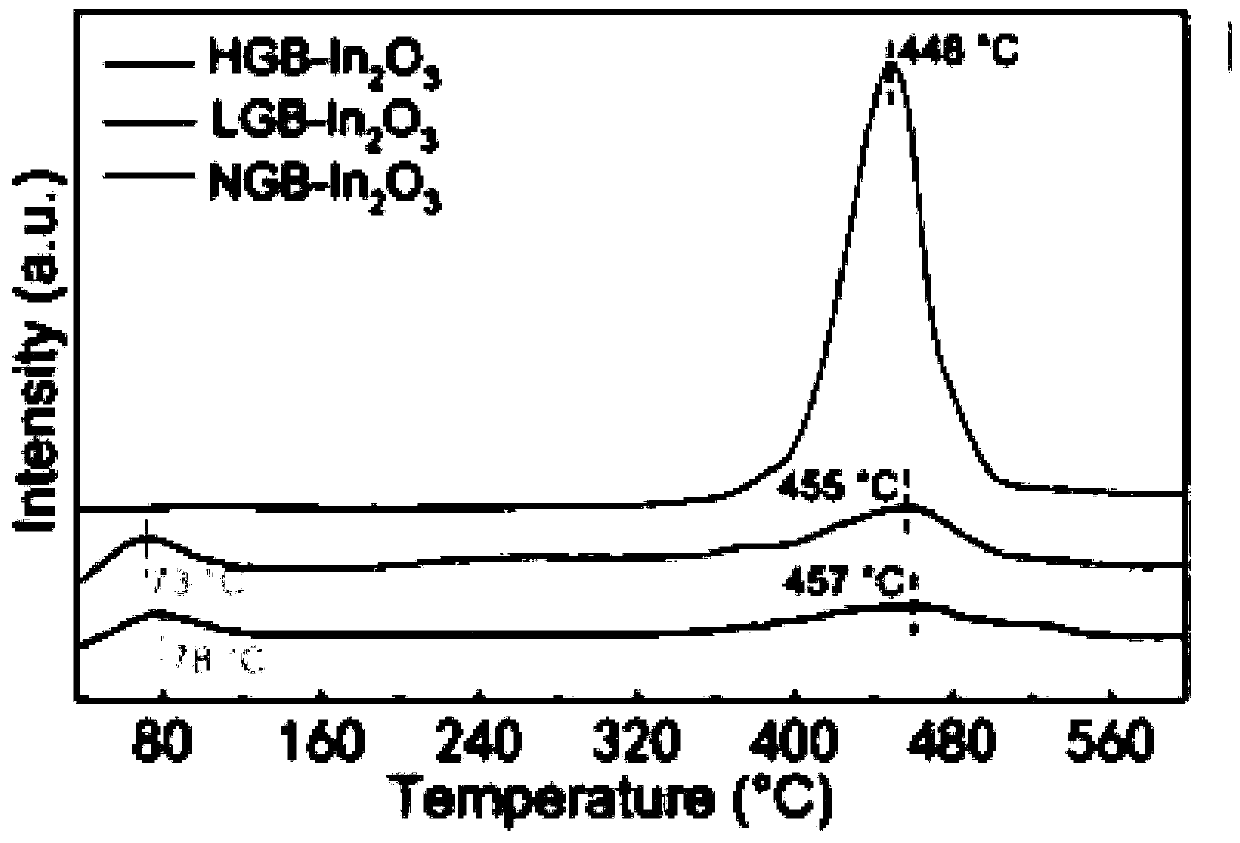Catalyst for reduced aminomethylation and preparation and application thereof
An amine methylation and catalyst technology, which is applied in the field of preparation of catalytic amine methylation catalysts, can solve the problems of high cost and lack of material sources, and achieves the effects of convenient operation, improved methylation efficiency and high catalytic efficiency.
- Summary
- Abstract
- Description
- Claims
- Application Information
AI Technical Summary
Problems solved by technology
Method used
Image
Examples
Embodiment 1
[0076] A method for preparing a high-density grain boundary catalyst for the methylation reaction of amines, and its application in the methylation reaction of amines, comprising the following steps:
[0077] 1. Synthesis of HGB-In2O3 (indium oxide nanocatalyst with high density grain boundary)
[0078] 1) Dissolve 3 mmol of indium acetate, 1.62 mmol of 4,4'-bipyridine and 3 mmol of 2,2'-biphenyldicarboxylic acid in 45 mL of deionized water, and then stir at room temperature for 30 minutes.
[0079] 2) The solution was transferred to a 50 mL Teflon-lined autoclave, which was then sealed and heated at 150° C. for 20 hours.
[0080] 3) After cooling the mixture to room temperature, the precipitate was collected by centrifugation, washed three times with deionized water, ethanol and acetone, respectively, and then dried at 60° C. for 12 hours.
[0081] 4) Calcining the obtained In-MOF in a muffle furnace at 350°C for 3 hours to obtain HGB-In2O3 (indium oxide nanocatalyst with hi...
Embodiment 2
[0122] The catalyst prepared in Example 1 was tested for cycle stability. The method of embodiment 1 is repeated, and the cycle is carried out five times, and each test test result is shown in Figure 11 , the test data are shown in Table 1.
[0123] Table 1
[0124]
[0125] From figure 1 It can be seen from the data in Table 1 that the catalyst of the present invention has good catalytic activity, not only that, but also good cycle stability.
Embodiment 3
[0127] Compared with Example 1, the only difference is that the temperature of the calcination process is 300°C. According to the formula, the calculated grain boundary density is 98000. Using the same test method as in Example 1, it was found that the final 9h conversion rate was 45.7%.
PUM
 Login to View More
Login to View More Abstract
Description
Claims
Application Information
 Login to View More
Login to View More - R&D
- Intellectual Property
- Life Sciences
- Materials
- Tech Scout
- Unparalleled Data Quality
- Higher Quality Content
- 60% Fewer Hallucinations
Browse by: Latest US Patents, China's latest patents, Technical Efficacy Thesaurus, Application Domain, Technology Topic, Popular Technical Reports.
© 2025 PatSnap. All rights reserved.Legal|Privacy policy|Modern Slavery Act Transparency Statement|Sitemap|About US| Contact US: help@patsnap.com



